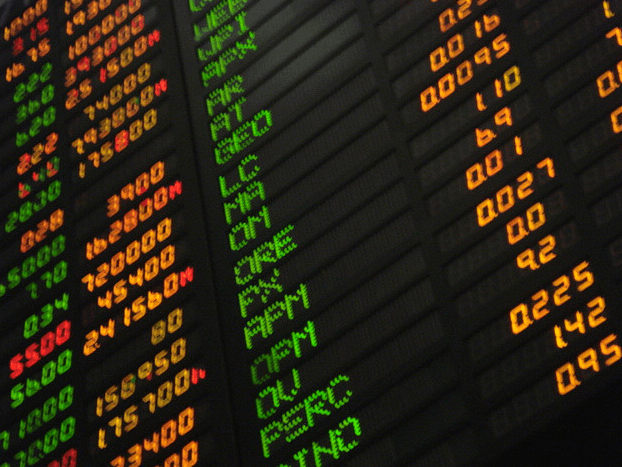European stocks were back on the defensive Monday after government data showed a fall in China’s industrial profits, fueling fresh concerns about a bigger slowdown in the world’s second-largest economy.
The pan-European STOXX 600 declined 1.2% after trimming its weekly losses last Friday.
The FTSE 100 Index in London was down 1.7%. Frankfurt’s DAX Index declined 1.4%. The CAC 40 in Paris and the IBEX 35 in Madrid were each down by more than 1%.
Chinese industrial companies saw their profits decline by 8.8% in the 12 months through August, extending July’s 2.1% drop, Beijing’s National Bureau of Statistics reported Monday. In total, industrial profits in August were down $24.59 billion compared with year-ago levels. Government data also showed that industrial profits had declined 1.9% annually through the first eight months of the year.
Chinese exporters were among the hardest hit, government data showed, reflecting foreign exchange losses as a result of Beijing’s first currency devaluation in two decades.
Companies were also hit hard by a volatile stock market. China’s benchmark Shanghai Composite Index is down a staggering 40% since mid-June.
The Shanghai Composite Index posted a modest rally Monday, gaining 0.3% to 3,100.76. Elsewhere in Asia, the Nikkei 225 fell 1.3% or 235.40 points to 17,645.11.
Commodities markets sold off at the start of the week, with oil prices falling around 2%. International benchmark Brent crude declined 87 cents to $47.73 a barrel on ICE Futures Europe. US benchmark West Texas Intermediate (WTI) for November settlement fell 96 cents to $44.74 a barrel.
Gold and other precious metals were also down sharply. December gold plunged more than $16 to $1,129.50 per troy ounce. The spot contract was down nearly $17.
Silver prices fell 51 cents or 3.4% to $14.61 per troy ounce. Prices for copper and platinum were also down.
Chinese growth woes supported the US dollar ahead of an active trading week. The dollar index, a weighted average of the greenback against a basket of trading peers, rose 0.2% to 96.42.
The dollar was mildly supported by a rise in personal spending in August, as well as a slight uptick in core personal consumption expenditures, the Federal Reserve’s preferred measure of inflation.
On Friday the Labor Department will release September nonfarm payrolls data, one of the most highly anticipated reports of the month. Economists forecast US employers to have added 203,000 nonfarm jobs in September.
Tradersdna is a leading digital and social media platform for traders and investors. Tradersdna offers premiere resources for trading and investing education, digital resources for personal finance, market analysis and free trading guides. More about TradersDNA Features: What Does It Take to Become an Aggressive Trader? | Everything You Need to Know About White Label Trading Software | Advantages of Automated Forex Trading





































